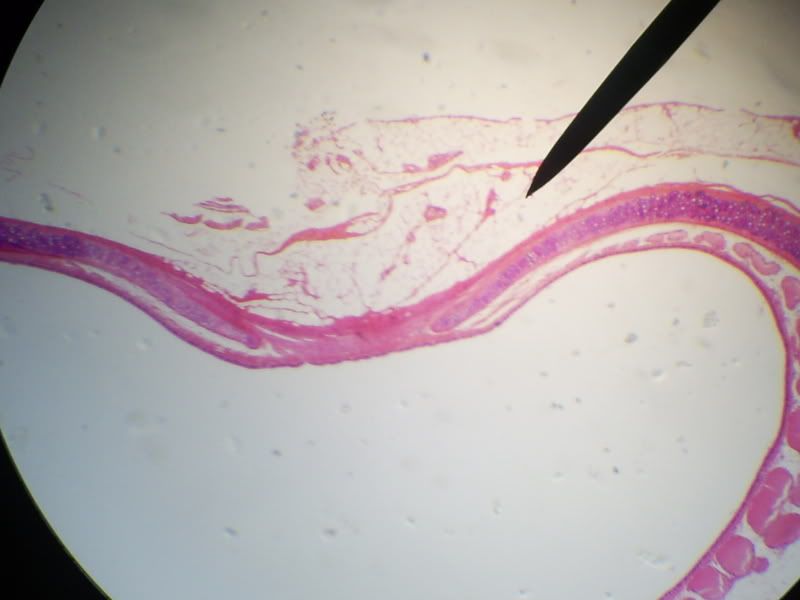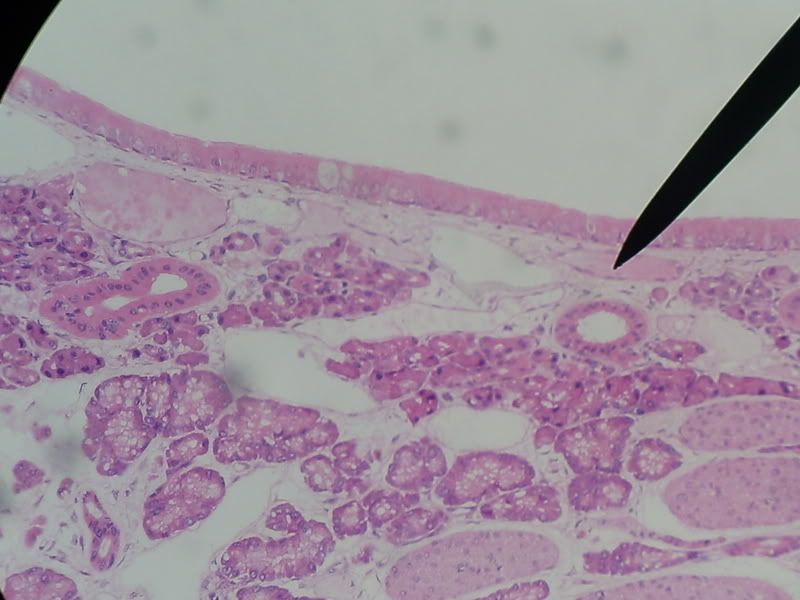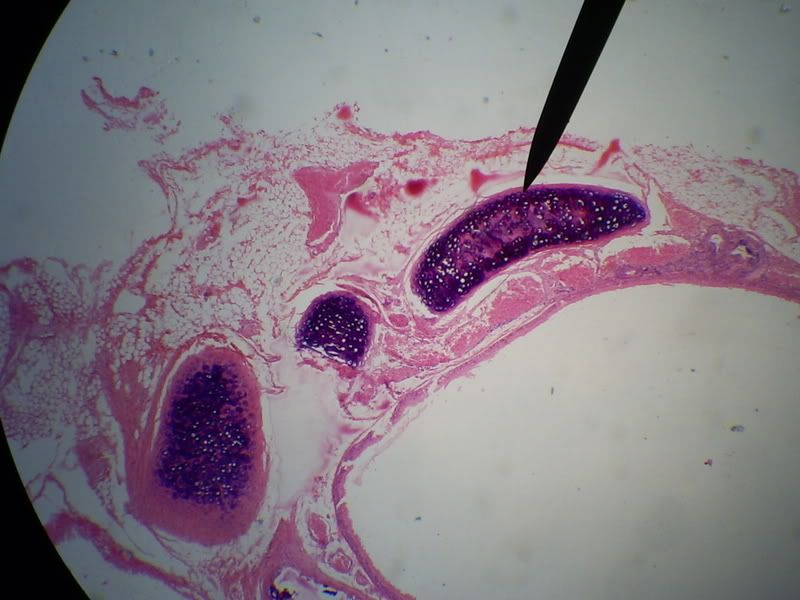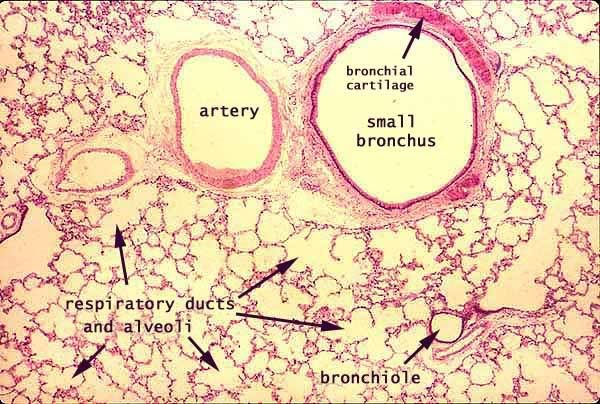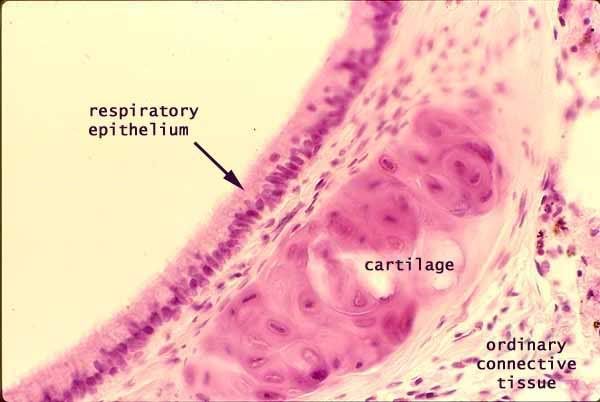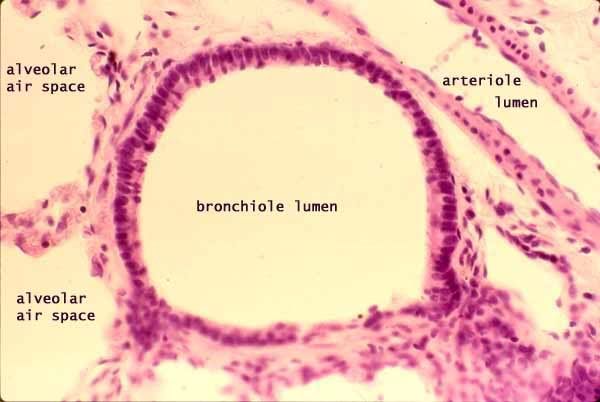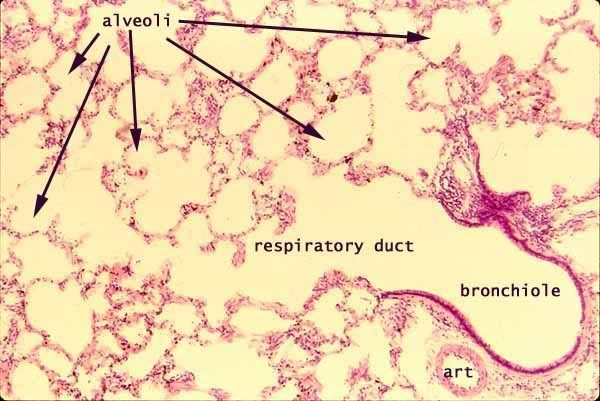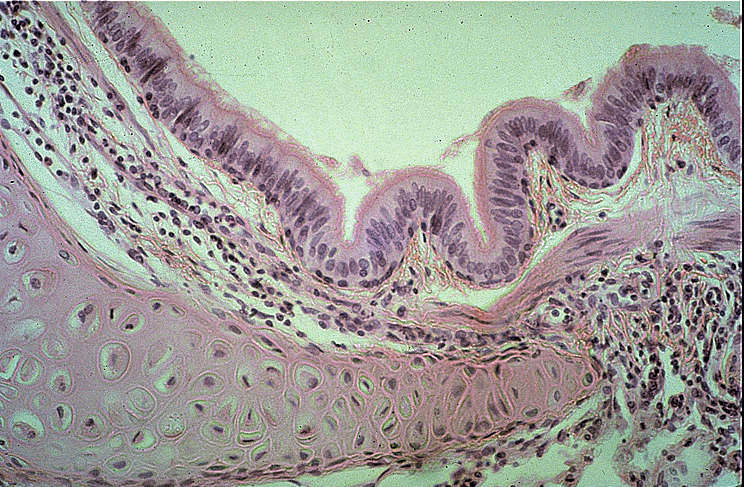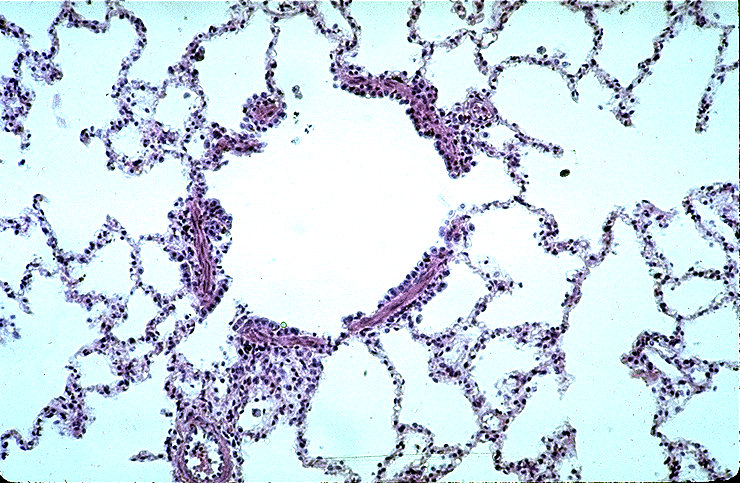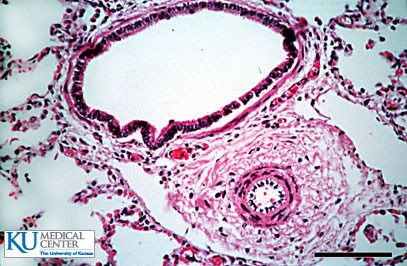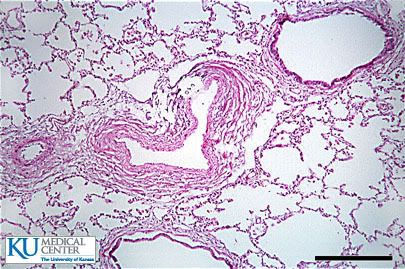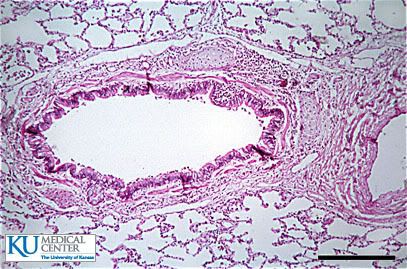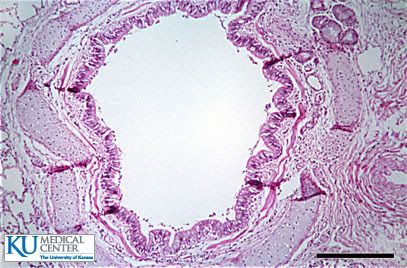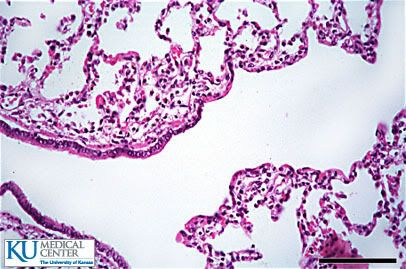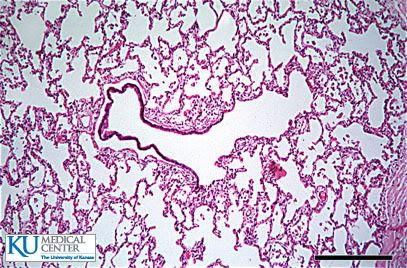Degrauw's Biology page..The link was Waaaaaaayyyyy back on the 2nd post.
The fabulous
practice questions What to find or know function on the practical quiz:
Upper respiratory structures:
Oral cavity-
Hard Palate- bone structure superior to teeth
Soft Palate- soft tissue behind hard palate which extends to
uvulaExternal Nares- opening of nose
Nasal Cavity- nose internal area
Nasal Septum- divides right and left cavities
Nasal Conchae- tissue wrapped around
turbinate bones
Turbinate Bones- bones in nose covered with tissue to assist in mixing, warming, filtering and humidifying air
Internal Nares- Internal Nasal cavity
Nasopharynx- Nose area to uvula
uvula- continuation of soft pallate
Pharyngeal Tonsil- in posterior nasal cavity
Oropharynx- Uvula to larynx
palatine tonsil- near Uvula
Phayngeal tonsil- in posterior nasal cavity
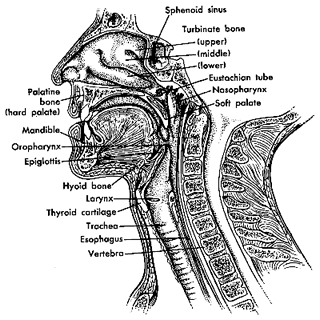 Larynx-
Larynx-
Hyoid bone- under chin, bone unconnected
Thyroid Cartilage- Of larynx inferior to hyoid largest piece of cartilage
Arytenoid Cartilage- internal thyroid cartilage posterior to vocal cords
Cricoid cartilage- Inferior to thyroid
Thyrohyoid ligament (membrane) between hyoid and thyroid
Cricothyroid ligament- between cricoid and thyroid
Epiglottis- flexible elastic cartilage superior to larynx opening- closes off respiratory system from esophagus
Glottis
Vestibular Fold- "false vocal" skin folds over vocal cords
Vocal fold- true vocal cords more string-like in appearance
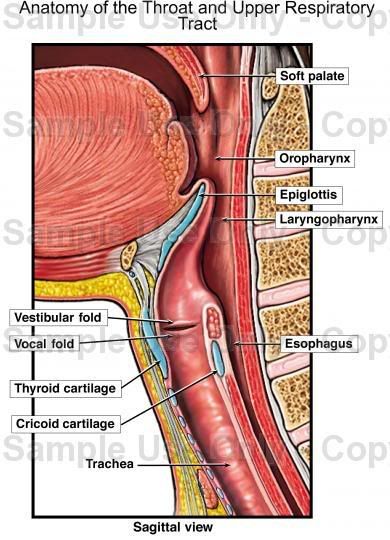
Our models from class- can you identify??
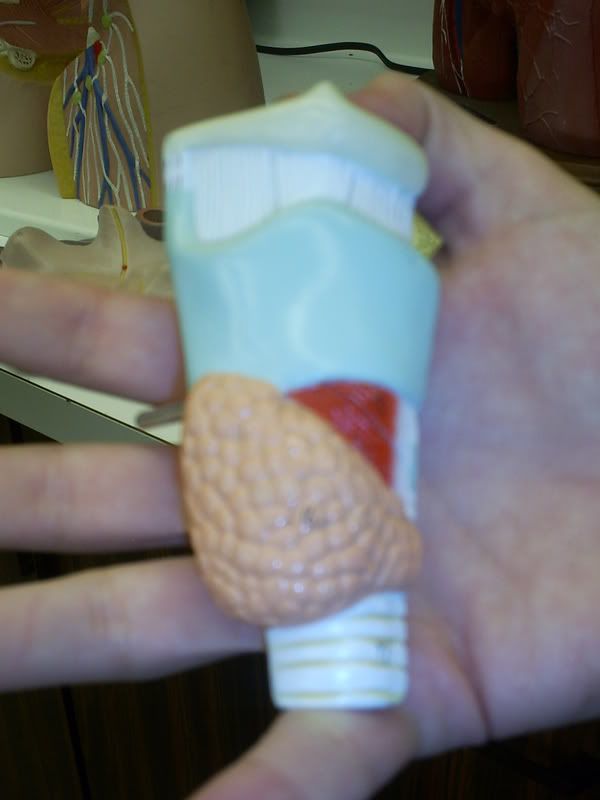
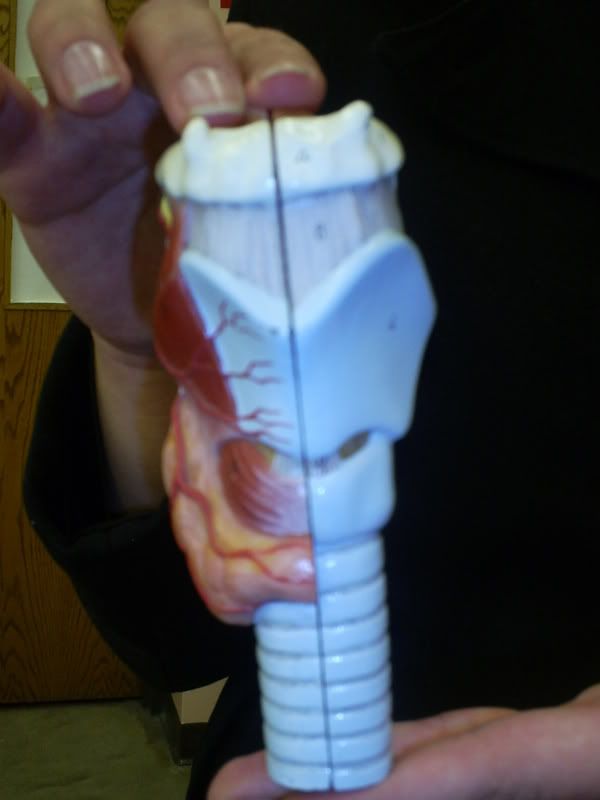
Another Model you can count on seeing
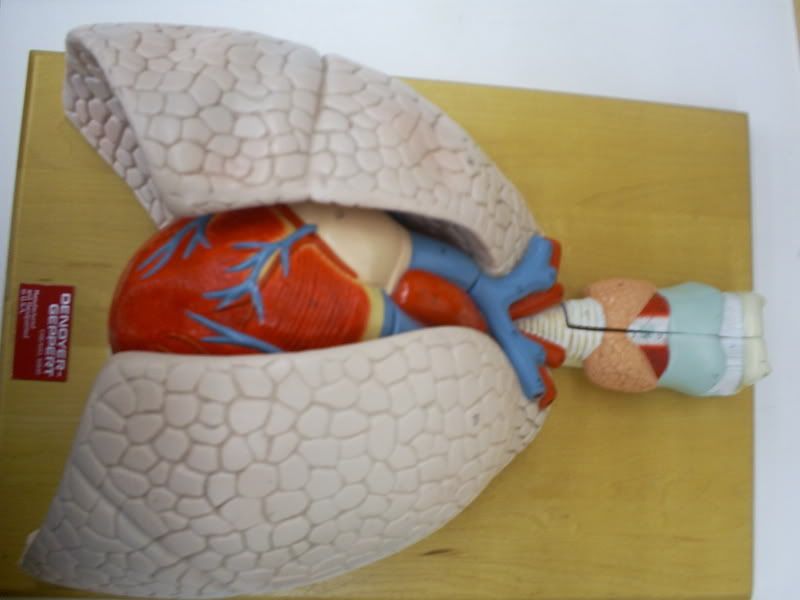 Lower respiratory Structures:
Lower respiratory Structures:
Trachea-
trachealis muscle- smooth muscle through trachea
Tracheal rings- cartilagenous rings "C" shaped
Tracheal Bifurcation
Carina- special C shaped cartilage
Hilus- point where bronchi, blood vessels and nerves enter the lungs
Primary Bronchi-
Secondary Bronchi-
Lobes of the Lung- 2 left lobes and 3 right lobes
Cardiac Notch- impression of heart into left lung
Diaphragm-
Visceral Pleura- The viscera of the lungs folds upon itself at the hilus to for the parietal fluid. It is filled with parietal pleura
Parietal Pleura-
The respiratory zone (as opposed to prior conducting zone)
Respiratory bronchioles allow the first air exchange
